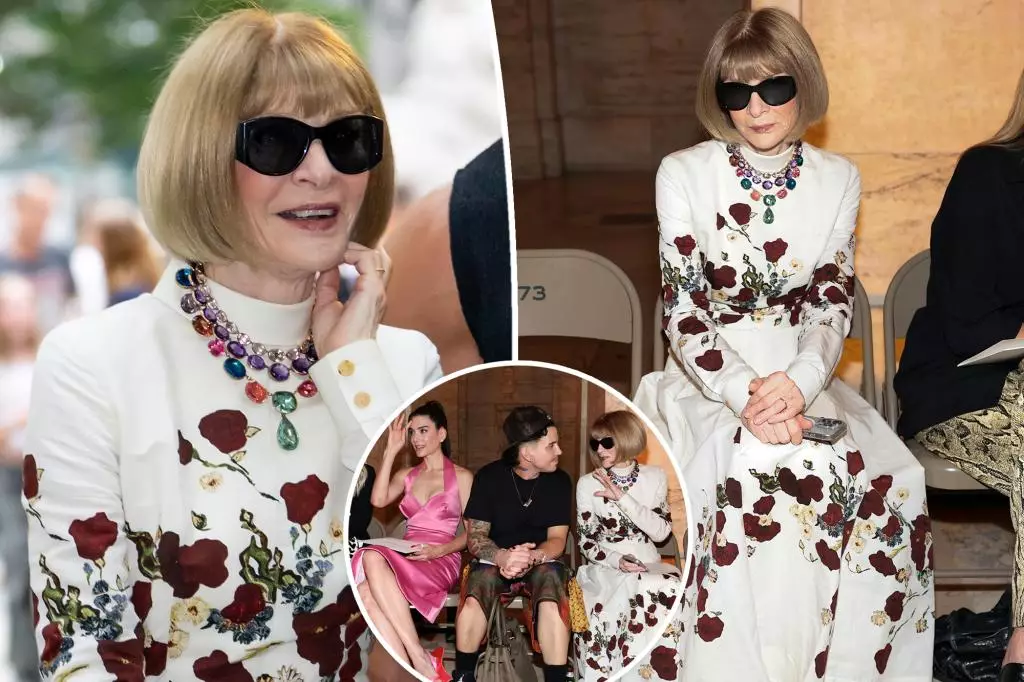Anna Wintour has long been an emblem of the fashion industry—an icon whose presence commands attention and respect. Her recent departure as Vogue’s editor-in-chief marks the end of an era that significantly shaped the cultural landscape. Yet, her influence remains undiminished, as her first public appearance following her departure demonstrates. Dressed in a refined floral ensemble that balances elegance with personality, Wintour reaffirmed her status not just as a style icon but as a formidable leader who understands the visual language of sophistication. Her choice of accessories—vibrant necklaces and sunny shoes—highlight her signature flair for blending classic with bold statements, reinforcing her personal brand as both a trendsetter and a seasoned curator of taste.
Strategic Transition and Continued Power
The transition from her role as Vogue’s editor-in-chief doesn’t signal a retreat into the background; rather, it highlights her strategic acumen. By assuming the position of chief content officer for Condé Nast and Vogue’s global editorial director, Wintour retains a commanding presence behind the scenes. This move allows her to shape the industry without the day-to-day responsibilities that come with the editor’s chair. Remaining attentive to the core elements of her role—fashion innovation, cultural commentary, and flagship events like the Met Gala—Wintour demonstrates a rare ability to adapt and evolve without losing her influence. Her declaration to stay involved in pivotal projects such as Vogue Worlds and her promise to continue editing the tennis and theater sections reveal her unwavering commitment to cultural leadership and her vision for integrating fashion with broader artistic domains.
Fashion’s Power Broker and Cultural Moderator
Choosing Marc Jacobs’ show as her first post-Official appearance was more than a style statement—it was a calculated act of solidarity and a testament to her deep-rooted connections within fashion’s inner circle. Jacobs, who once served as her confidant and collaborator, represents Wintour’s approach to nurturing talent and fostering creative dialogue. Her decision to entrust Jacobs with the role of guest editor for Vogue’s December issue during a politically charged period underscores her forward-thinking mindset. Wintour sees beyond the immediate trends; she understands fashion’s potential to be a platform for meaning and societal commentary. Her leadership has always balanced the aesthetics of glamor with the subtlety of influence, and her continued involvement ensures that Vogue remains a powerful cultural force capable of shaping conversations far beyond runway shows.
Reflections on a Transformative Era
Wintour’s career embodies one of the most transformational periods in fashion history. Her reign at Vogue coincided with the rise of streetwear, digital innovation, and changing societal norms—yet she navigated these shifts with a steady hand. Her departure symbolizes not just a personal milestone but also a pivotal moment for the industry to redefine leadership and innovation. While her physical presence may be diminishing within the magazine’s day-to-day operations, her impact endures. Her strategic repositioning signals confidence in new leadership while ensuring that her cultural fingerprints will continue to influence future generations of fashion icons, editors, and designers. With her legacy firmly cemented, Wintour’s journey exemplifies how true influence adapts and persists in the ever-evolving landscape of style and cultural discourse.

